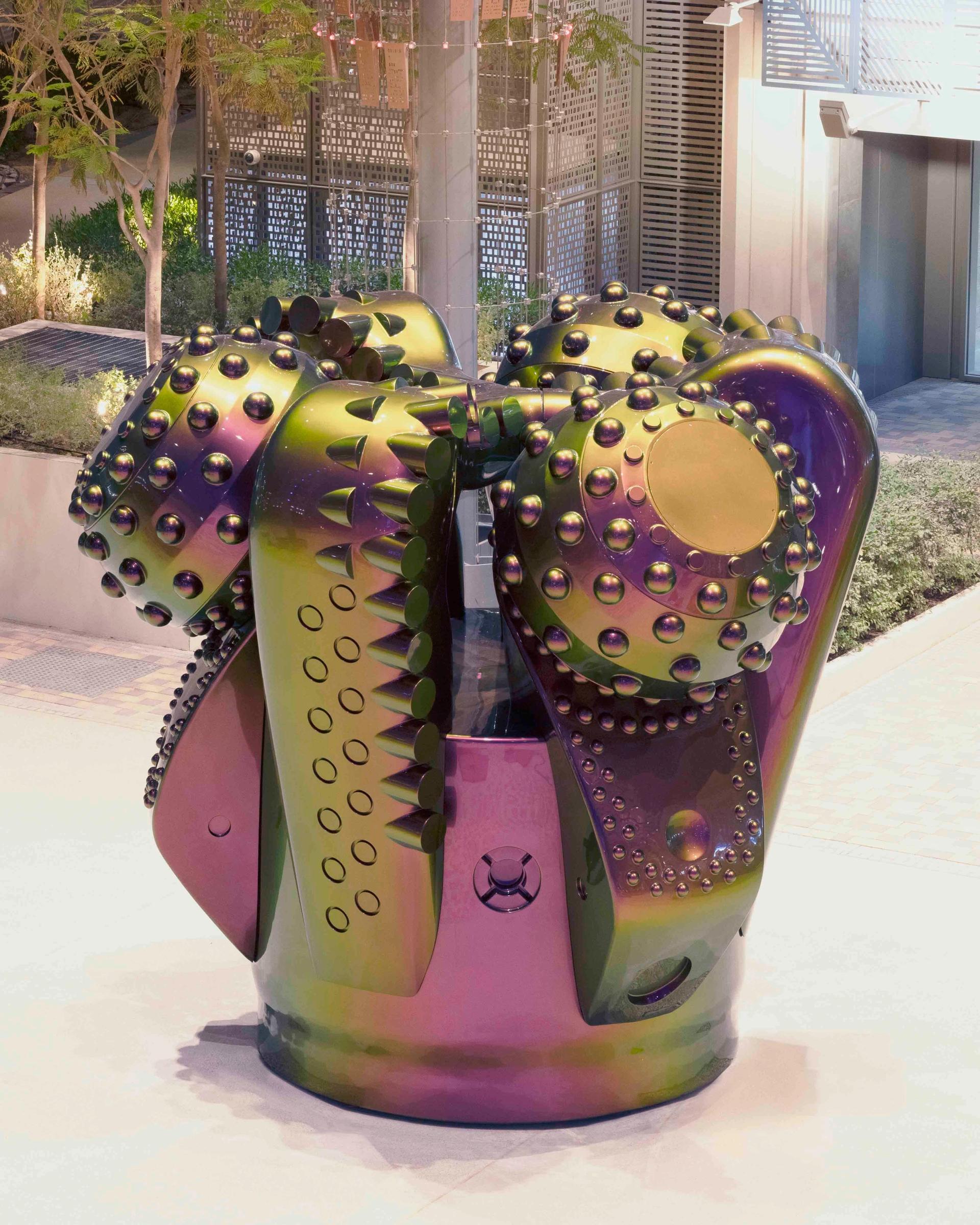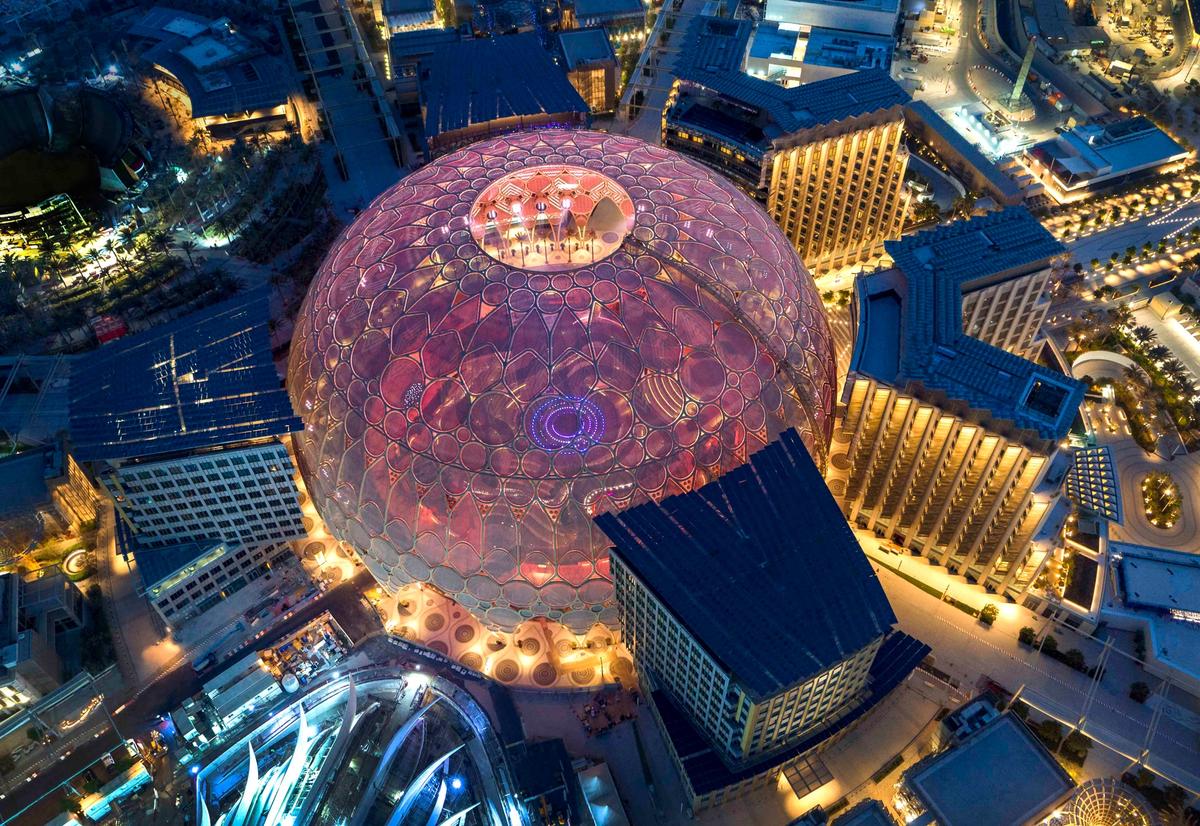Delayed a year due to the pandemic, Dubai’s Expo 2020 will finally open this autumn (1 October to 31 March, 2022). The first world fair to take place in the Middle East, it includes large-scale art interventions by regional and international artists such as Hamra Abbas, Nadia Kaabi-Linke, Khalil Rabah, Olafur Eliasson, Yinka Shonibare and Haegue Yang. UAE artists featured include Afra Al Dhaheri, Shaikha Al Mazrou, Abdullah Al Saadi and Asma Belhamar.
Dubai's interpretation of globalism is generally one of massive scale and mass consumerism, where the replica reigns supreme. In 1997, Global Village was opened, a 1.6m sq. m. theme park featuring different cultures and cuisines. Then there is the yet-to-be-completed Mall of the World, originally planned to coincide with Expo 2020, which will have temperature-controlled areas mimicking London’s Oxford Street, LA’s Beverly Hills, and Tokyo’s Ginza.
Expo’s site is a massive 4.3 sq. m plot in Dubai South, near Al Maktoum International Airport, and the 190-plus countries involved will each have their own pavilion—independently designed if they have the funds for it. It's a chance to show off architectural prowess, and the Spanish architect Santiago Calatrava is creating a falcon-inspired UAE pavilion.

Olafur Eliasson's The Presence of Absence (2019) © Olafur Eliasson. Photo by Anders Sune Berg. Courtesy the artist; neugerriemschneider, Berlin; Tanya Bonakdar Gallery, New York/Los Angeles
The permanent works of art will be set out within three themed districts—Mobility, Sustainability and Opportunity. Eliasson’s work, The presence of absence, formed from bronze cast around melting glacial ice from Greenland, is the only one that is not a new commission.
“The area very much represents the new UAE and how it is moving towards the future,” says Hayat Shamsuddin, Expo’s senior vice president. This vision is both high-tech and eco-friendly, with self-driving vehicles and cycle tracks made from reconstituted tyres. The majority of Expo’s infrastructure (over 80%) will lay out a future city (District 2020) comprising an international business and real estate hub—China’s AI provider Terminus Technologies will be among the tenants.
The work that will launch Expo’s Public Art programme, curated by the Brussels-based curator and architect Tarek Abou El Fetouh, is more context-specific than forward-looking. Chimera, a monumental aluminium and galvanised steel sculpture in the form of an extractive oil drill by the Kuwaiti artist Monira Al Qadiri, explores the relationship between the Gulf’s pre- and post-oil worlds. It is part of Al Qadiri’s dream to create an oil drill monument in every Gulf city: “I grew up in a place where public sculptures were installed on roundabouts. They were only visible through a window, like a mirage. You couldn’t get close to them,” she says.

Chimera by Kuwaiti artist Monira Al Qadiri © Monira Al Qadiri 2021. Commissioned by, and collection of, Expo 2020 Dubai
“The discovery of oil caused the most important socioeconomic shifts in Gulf cities,” El Fetouh says, “I think it’s very significant that we see related concepts in public space.” Al Qadiri’s retro-futurist presentation of this machinery of extraction takes an aesthetic, rather than nostalgic, approach towards the material legacy of the pearl diving economy. It took Al Qadiri two years to create the right pearlescent, petroleum-like colour: “The colours change dramatically during the day, giving off crazy hues, like an animation you cannot capture,” she says.
El Fetouh’s starting point for the programme was the Book of Optics by the 11th century Arab scholar Ibn al Haytham. He says: “Ibn al-Haytham’s theories of visual perception and recognition lead us to the impossibility of envisioning a full picture of reality without the power of imagination. The latter may be the only human capacity that helps us navigate diverse cultural particulars, as well as the ability to grasp stories, however strange.”
El Fetouh adds that his curatorial approach “is designed to see the world from this precise point on earth, where one can connect to the Gulf region with the Arab World and South Asia with Africa.” Yinka Shonibare’s Wind Sculpture III encapsulates these links with a floating African fabric sculpture that is actually made from South East Asian batik first brought to Africa by 19th-century Dutch traders.


